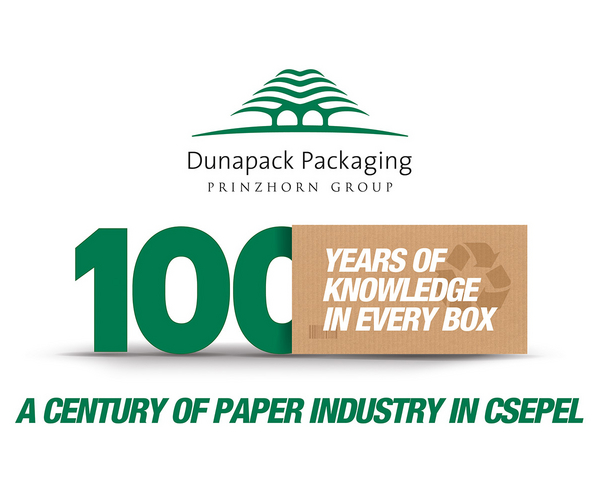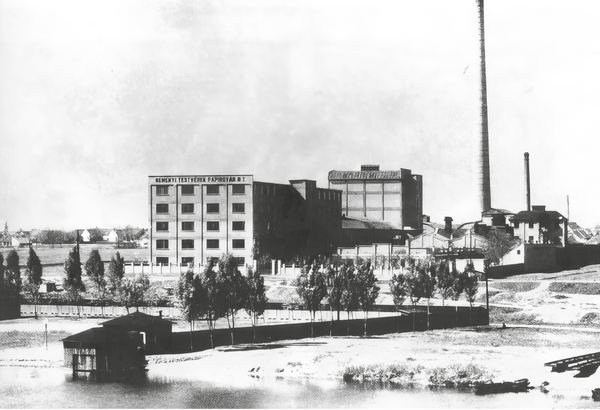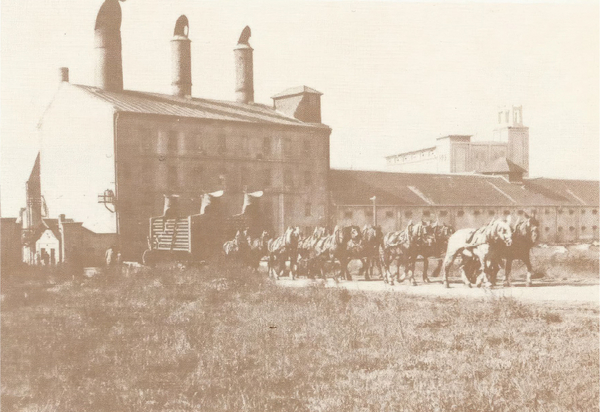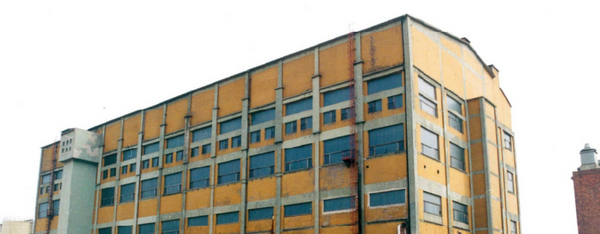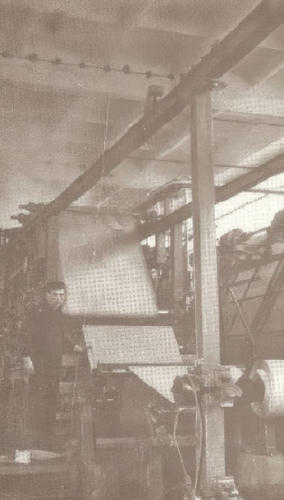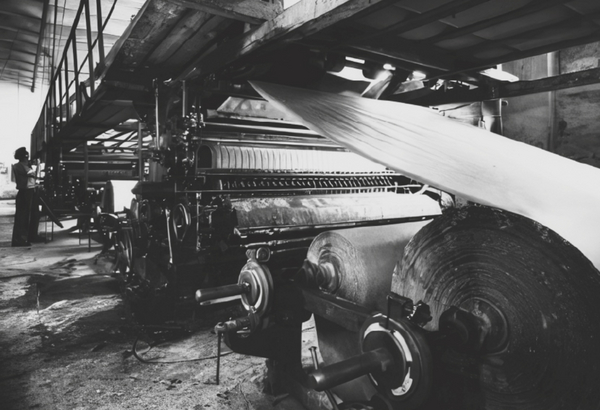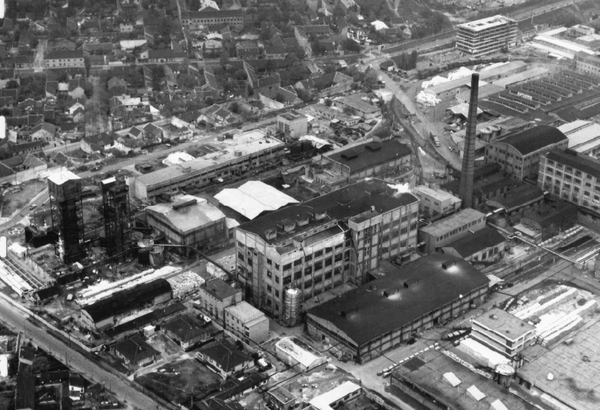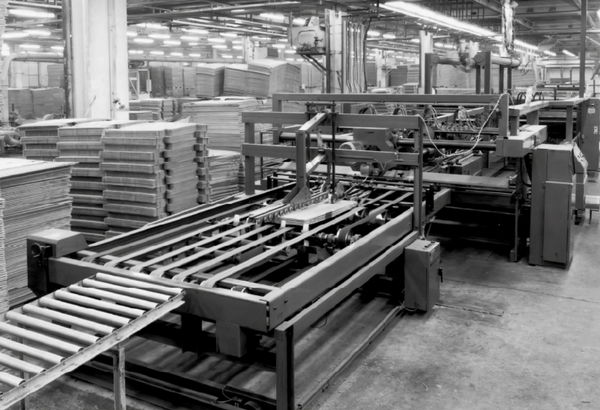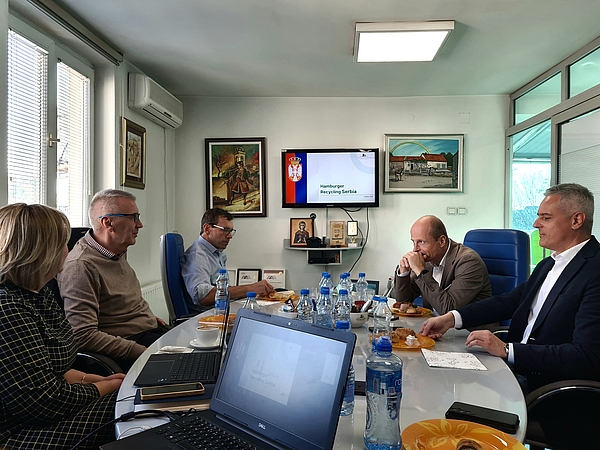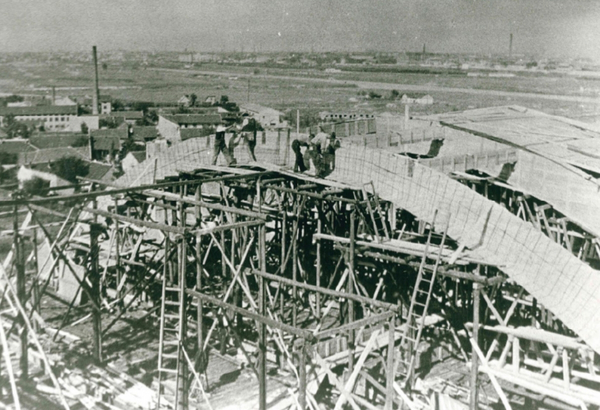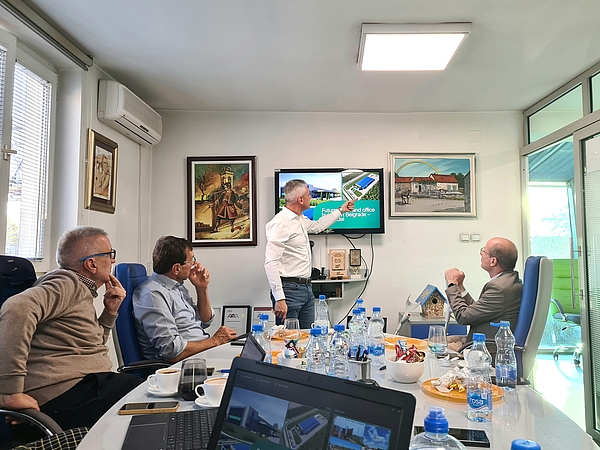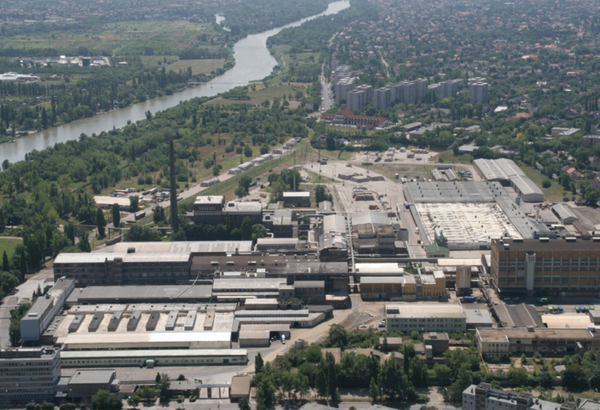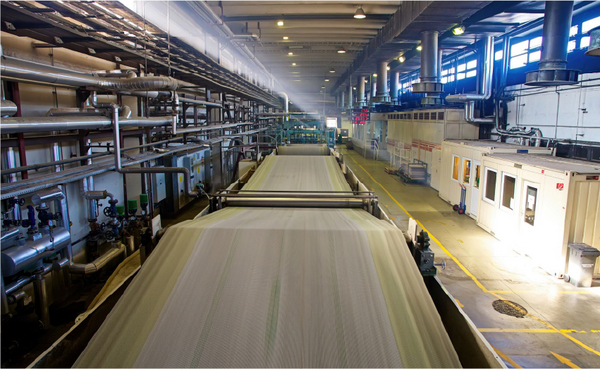In 2023, one of the strongholds of the Hungarian paper industry, the Csepel plant of Dunapack Packaging, formerly known as Csepeli Papírgyár, celebrates its 100th anniversary. Throughout these decades the factory, which is celebrating its centenary, remained one of the cradles of the industry in Central Europe and the most important base in Hungary.
In 2023, one of the strongholds of the Hungarian paper industry, the Csepel plant of Dunapack Packaging...
In 2023, one of the strongholds of the Hungarian paper industry, the Csepel plant of Dunapack Packaging, formerly known as Csepeli Papírgyár, celebrates its 100th anniversary. Throughout these decades the factory, which is celebrating its centenary, remained one of the cradles of the industry in Central Europe and the most important base in Hungary.
The Neményi Brothers Paper Factory Ltd. laid the foundations for a new paper mill in 1923 with a Greenfield investment. A year later, the paper machine no.1, which was in operation in Csepel until 1991, started production with 25 employees.
The Neményi Brothers Paper Factory Ltd. laid the foundations for a new paper mill in 1923...
The Neményi Brothers Paper Factory Ltd. laid the foundations for a new paper mill in 1923 with a Greenfield investment. A year later, the paper machine no.1, which was in operation in Csepel until 1991, started production with 25 employees.
The infrastructure was developed with buildings and production equipment in the following years: by the end of the 1930s, the pulp mill buildings were completed, and by then 6 paper machines and their service units were in operation. In 1933, horses were still towing the boilers to the site, but to facilitate the transport of building materials and raw materials a new railway track network was soon installed.
The infrastructure was developed with buildings and production equipment in the following years...
The infrastructure was developed with buildings and production equipment in the following years: by the end of the 1930s, the pulp mill buildings were completed, and by then 6 paper machines and their service units were in operation. In 1933, horses were still towing the boilers to the site, but to facilitate the transport of building materials and raw materials a new railway track network was soon installed.
The factory construction works were supervised by the founder-owner József Neményi (pictured behind the feed line of the wood peeler installed in 1933) and was actively involved already in the planning phases. He usually wore the same working clothes every day, his workers were mostly impressed by his simplicity, directness, professionalism and hard work. He managed the factory until 1948, when it was nationalised after the Second World War.
The factory construction works were supervised by the founder-owner József Neményi...
The factory construction works were supervised by the founder-owner József Neményi (pictured behind the feed line of the wood peeler installed in 1933) and was actively involved already in the planning phases. He usually wore the same working clothes every day, his workers were mostly impressed by his simplicity, directness, professionalism and hard work. He managed the factory until 1948, when it was nationalised after the Second World War.
Cellulose was produced between 1948 and 1987, and semi-cellulose raw material between 1967 and 1992. The plant, built between 1938 and 1940, was home to several factory sections until its demolition in 2015.
Cellulose was produced between 1948 and 1987...
Cellulose was produced between 1948 and 1987, and semi-cellulose raw material between 1967 and 1992. The plant, built between 1938 and 1940, was home to several factory sections until its demolition in 2015.
Although the first two-year apprenticeship course already started in the autumn of 1947, the paper-making profession was finally recognised in 1955, and apprenticeship training began at the mill afterwards. In 1960, a new paper machine was inaugurated: the paper machine no.7, thanks to the innovations of the local craftsmen, was designed, built and assembled by the mill’s employees for educational purposes.
Although the first two-year apprenticeship course already started in the autumn of 1947...
Although the first two-year apprenticeship course already started in the autumn of 1947, the paper-making profession was finally recognised in 1955, and apprenticeship training began at the mill afterwards. In 1960, a new paper machine was inaugurated: the paper machine no.7, thanks to the innovations of the local craftsmen, was designed, built and assembled by the mill’s employees for educational purposes.
The Friedrich Müller corrugator started production in 1959 in the brand new factory building, and parallel the old boiler was replaced by a new, modern paper mill power plant.
The Friedrich Müller corrugator started production in 1959...
The Friedrich Müller corrugator started production in 1959 in the brand new factory building, and parallel the old boiler was replaced by a new, modern paper mill power plant.
In 1963, the entire production capacity of the industry was merged. The Csepel site became the main factory of the Paper Industry Corporation (PV), from where the entire large company was managed until 1968, when the company headquarters was established, although at the Csepel site, but separated from the management of the Csepel Paper Mill in the interests of efficiency.
In 1963, the entire production capacity of the industry was merged...
In 1963, the entire production capacity of the industry was merged. The Csepel site became the main factory of the Paper Industry Corporation (PV), from where the entire large company was managed until 1968, when the company headquarters was established, although at the Csepel site, but separated from the management of the Csepel Paper Mill in the interests of efficiency.
The box factory known in factory jargon „New Flute” was already producing in 1965 on the world’s leading Henry Simon corrugator with automatic converting machines in the 11,000 square metre factory. In 1966 the new paper machine No.6 (Tampella) was the first in Hungary to operate with a high degree of automatic control, full pneumatic instrumentation, and a large number of regulators. With the rampup of the wood pulp plant in 1967, a corrugated production base was established: raw material production, base paper and corrugated sheet production, and converting department for the production of finished boxes - all in one place: in Csepel.
The box factory known in factory jargon „New Flute” was already producing in 1965...
The box factory known in factory jargon „New Flute” was already producing in 1965 on the world’s leading Henry Simon corrugator with automatic converting machines in the 11,000 square metre factory. In 1966 the new paper machine No.6 (Tampella) was the first in Hungary to operate with a high degree of automatic control, full pneumatic instrumentation, and a large number of regulators. With the rampup of the wood pulp plant in 1967, a corrugated production base was established: raw material production, base paper and corrugated sheet production, and converting department for the production of finished boxes - all in one place: in Csepel.
In the early 1970s, the sack manufacturing and the jug seal were moved from Csepel, the production of the outdated paper twine was discontinued and the wood grinder workshop was also closed. In the second half of the decade, the existing machinery was modernised. Max 180 sticher machine was installed and the corrugator was refurbished.
In the early 1970s, the sack manufacturing and the jug seal were moved from Csepel...
In the early 1970s, the sack manufacturing and the jug seal were moved from Csepel, the production of the outdated paper twine was discontinued and the wood grinder workshop was also closed. In the second half of the decade, the existing machinery was modernised. Max 180 sticher machine was installed and the corrugator was refurbished.
Improving the living conditions of workers was a multi-directional task. In 1970, a new medical clinic was opened and the factory contributed substantial sums to the factory canteens, childcare facilities, and holiday homes on Lake Balaton. Catering services were taken over by the Csepel Catering Company in 1975. First there were 2, then 3 menus to choose from. A’la carte catering service was introduced from July 1982.
Improving the living conditions of workers was a multi-directional task...
Improving the living conditions of workers was a multi-directional task. In 1970, a new medical clinic was opened and the factory contributed substantial sums to the factory canteens, childcare facilities, and holiday homes on Lake Balaton. Catering services were taken over by the Csepel Catering Company in 1975. First there were 2, then 3 menus to choose from. A’la carte catering service was introduced from July 1982.
From almost the very beginning, the factory’s sporting life has been a feature of the site rowing, swimming, football, boxing and bowling. In 1956, a modern sports ground was built for them, and by 1 May 1985, a wood-framed, tent-roofed swimming pool was completed. In addition to the locker rooms, there were 2 club rooms, a buffet and a sauna for the comfort and entertainment of the guests. The facility was open to company employees and residents of the district, later on, sports clubs and schools used it for training and education purposes. In August 1985, the Csepel Paper Mill hosted 1100 competitors from other mills of the PV in the highly successful Paper Olympics.
From almost the very beginning, the factory’s sporting life has been a feature of...
From almost the very beginning, the factory’s sporting life has been a feature of the site rowing, swimming, football, boxing and bowling. In 1956, a modern sports ground was built for them, and by 1 May 1985, a wood-framed, tent-roofed swimming pool was completed. In addition to the locker rooms, there were 2 club rooms, a buffet and a sauna for the comfort and entertainment of the guests. The facility was open to company employees and residents of the district, later on, sports clubs and schools used it for training and education purposes. In August 1985, the Csepel Paper Mill hosted 1100 competitors from other mills of the PV in the highly successful Paper Olympics.
In 1986-1987, a new (Mitsubishi) corrugator and converting machines were installed using a World Bank loan. The old Friedrich Müller corrugator was finally decommissioned. This major investment has led to a dramatic improvement in productivity and an increase in capacity.
In 1986-1987, a new (Mitsubishi) corrugator and converting machines were installed...
In 1986-1987, a new (Mitsubishi) corrugator and converting machines were installed using a World Bank loan. The old Friedrich Müller corrugator was finally decommissioned. This major investment has led to a dramatic improvement in productivity and an increase in capacity.
In 1990 the PV units were transformed into independent companies. On 1 August, Dunapack Plc. was established with a 40 per cent stake held by the Austrian investor (Hamburger, Mosburger), which, in addition to Csepel Paper Mill, included Dunaújváros and Nyíregyháza Paper Mills. Full privatisation was finally completed in December 1995: almost 100 per cent of the shares went to the Prinzhorn Group through its subsidiaries (W. Hamburger AG and Mosburger GmbH).
In 1990 the PV units were transformed into independent companies...
In 1990 the PV units were transformed into independent companies. On 1 August, Dunapack Plc. was established with a 40 per cent stake held by the Austrian investor (Hamburger, Mosburger), which, in addition to Csepel Paper Mill, included Dunaújváros and Nyíregyháza Paper Mills. Full privatisation was finally completed in December 1995: almost 100 per cent of the shares went to the Prinzhorn Group through its subsidiaries (W. Hamburger AG and Mosburger GmbH).
In the 1990s, the group added new subsidiaries to expand its activities in Csepel: In 1994, Duparec, a waste paper treatment company, was established, which, following the demolition of buildings, built a new hall on the site. In 1998, Logipack, a company for manual converting and sorting, was founded which is still based in Csepel after various organisational forms. After all, in 2009 the production of base paper ceased here. From then on, Dunapack as part of the group’ s packaging business under the Dunapack Packaging brand is represented on the domestic and European markets by producing corrugated products at its three sites (Csepel, Dunaújváros and Nyíregyháza).
In the 1990s, the group added new subsidiaries to expand its activities in Csepel...
In the 1990s, the group added new subsidiaries to expand its activities in Csepel: In 1994, Duparec, a waste paper treatment company, was established, which, following the demolition of buildings, built a new hall on the site. In 1998, Logipack, a company for manual converting and sorting, was founded which is still based in Csepel after various organisational forms. After all, in 2009 the production of base paper ceased here. From then on, Dunapack as part of the group’ s packaging business under the Dunapack Packaging brand is represented on the domestic and European markets by producing corrugated products at its three sites (Csepel, Dunaújváros and Nyíregyháza).
The first Kawasaki robot arrived at Csepel in 2021, followed by several more since then. Prinzhorn Group in Hungary is at the forefront of operating a truly circular business model. Csepel-based Hamburger Recycling Hungary collects waste paper generated in Hungary for recycling. Hamburger Hungária, based in Dunaújváros, produces 7 00,000 tonnes of recycled corrugated base paper per year using the collected volume and imported paper. Dunapack Packaging uses this raw material to create innovative packaging solutions in Csepel, at Nyíregyháza plant, which celebrated its 50th anniversary last year, and at the brand new Dunavarsány factory, which was launched in 2022.
The first Kawasaki robot arrived at Csepel in 2021, followed by several more since then....
The first Kawasaki robot arrived at Csepel in 2021, followed by several more since then. Prinzhorn Group in Hungary is at the forefront of operating a truly circular business model. Csepel-based Hamburger Recycling Hungary collects waste paper generated in Hungary for recycling. Hamburger Hungária, based in Dunaújváros, produces 7 00,000 tonnes of recycled corrugated base paper per year using the collected volume and imported paper. Dunapack Packaging uses this raw material to create innovative packaging solutions in Csepel, at Nyíregyháza plant, which celebrated its 50th anniversary last year, and at the brand new Dunavarsány factory, which was launched in 2022.

